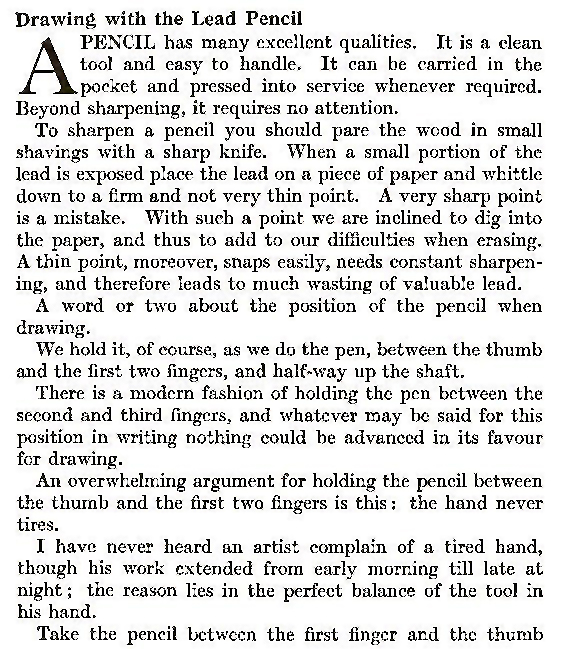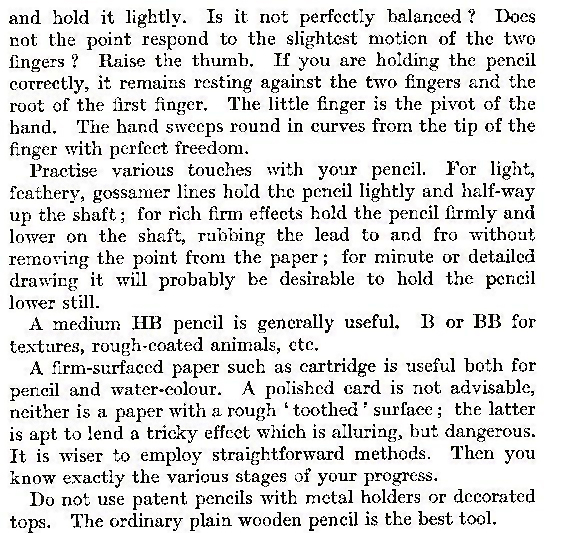Home > Drawing Lessons Directory > Drawing Mediums > Pencil Drawing > Drawing with Lead Pencils
LEARN THE TECHNIQUES FOR DRAWING WITH LEAD PENCILS
|
GO BACK TO THE HOME PAGE FOR TUTORIALS FOR BEGINNING ARTISTS
[The above words are pictures of text, below is the actual text if you need to copy a paragraph or two]
Drawing with the Lead Pencil
A pencil has many excellent qualities. It is a clean tool and easy to handle. It can be carried in the pocket and pressed into service whenever required. Beyond sharpening, it requires no attention.
To sharpen a pencil you should pare the wood in small shavings with a sharp knife. When a small portion of the lead is exposed place the lead on a piece of paper and whittle down to a firm and not very thin point. A very sharp point is a mistake. With such a point we are inclined to dig into the paper, and thus to add to our difficulties when erasing. A thin point, moreover, snaps easily, needs constant sharpening, and therefore leads to much wasting of valuable lead.
A word or two about the position of the pencil when drawing.
We hold it, of course, as we do the pen, between the thumb and the first two fingers, and half-way up the shaft. There is a modern fashion of holding the pen between the second and third fingers, and whatever may be said for this position in writing nothing could be advanced in its favour for drawing.
An overwhelming argument for holding the pencil between the thumb and the first two fingers is this : the hand never tires. I have never heard an artist complain of a tired hand, though his work extended from early morning till late at night ; the reason lies in the perfect balance of the tool in his hand.
Take the pencil between the first finger and the thumb and hold it lightly. Is it not perfectly balanced ? Does not the point respond to the slightest motion of the two fingers? Raise the thumb. If you are holding the pencil correctly, it remains resting against the two fingers and the root of the first finger. The little finger is the pivot of the hand. The hand sweeps round in curves from the tip of the finger with perfect freedom.
Practise various touches with your pencil. For light, feathery, gossamer lines hold the pencil lightly and half-way up the shaft ; for rich firm effects hold the pencil firmly and lower on the shaft, rubbing the lead to and fro without removing the point from the paper ; for minute or detailed drawing it will probably be desirable to hold the pencil lower still.
A medium HB pencil is generally useful. B or BB for textures, rough-coated animals, etc.
A firm-surfaced paper such as cartridge is useful both for pencil and water-colour. A polished card is not advisable, neither is a paper with a rough ' toothed ' surface ; the latter is apt to lend a tricky effect which is alluring, but dangerous. It is wiser to employ straightforward methods. Then you know exactly the various stages of your progress.
Do not use patent pencils with metal holders or decorated tops. The ordinary plain wooden pencil is the best tool.
Privacy Policy .... Contact Us






